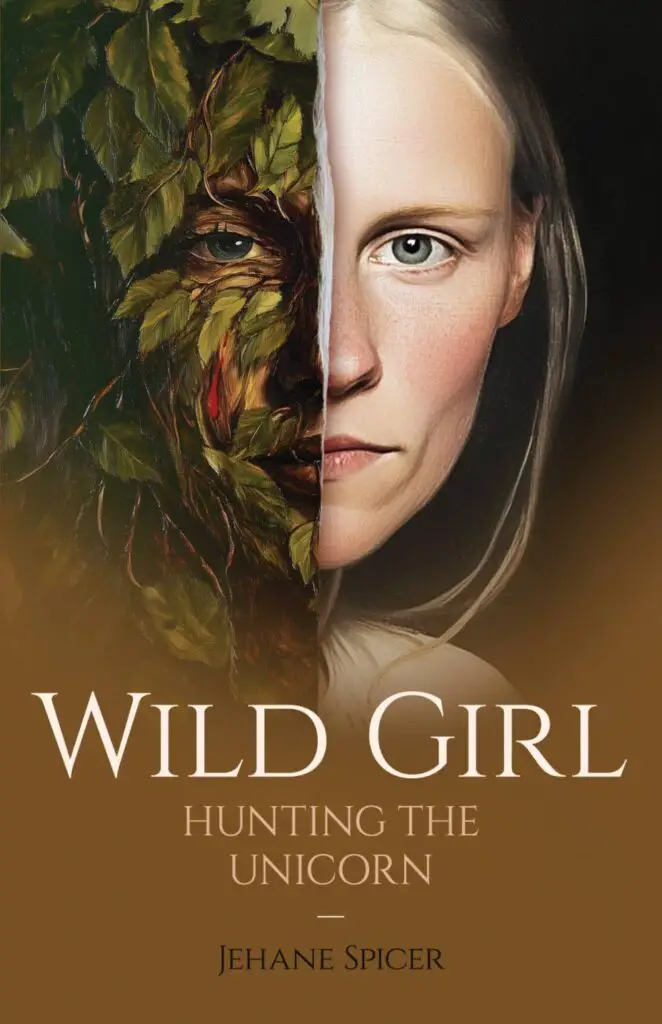
Some books do not simply tell a story; they invite you to step into a living world. Jehane Spicer’s Wild Girl: Hunting the Unicorn is one such novel. From the very first page, it feels like entering a richly woven tapestry, where every thread of myth, history, and human longing glimmers with meaning.
The novel opens in New York in 1929, as Abigail Rockefeller waits through the chaos of Black Tuesday. This scene is not just a historical backdrop; it is a masterclass in how Spicer builds atmosphere. The detail of Abby pouring herself a Scotch, an act both small and daring, immediately signals that this book is about women finding strength in moments both subtle and profound. Her gaze on the unicorn tapestries, particularly the mysterious girl in the red dress, prepares the reader for the larger themes that will unfold. I found myself lingering on that detail, realizing how carefully Spicer plants the seeds of her themes.
When the story carries us into fifteenth-century Burgundy, the tapestry grows even more vivid. We meet Helaine, the young heir of Château de Berzé, a heroine who is at once fragile and strong. Spicer renders her inner life with extraordinary care. Helaine invents a “secret box” in her mind to hold the pain of loss, a detail so intimate and unique that it lingers long after reading. What struck me most is how believable this small act of imagination feels, as though I had stumbled on a private diary rather than a work of fiction. This shows the novel’s depth: it is not only about historical events but also about the private, unspoken ways people endure.
The mythic elements of the novel are breathtaking. The unicorn is not a distant symbol but a presence alive with texture, weight, and breath. The Wild Boy, crowned with holly, feels as real as any historical figure, and together they bring to life the world of legend in a way that is tangible and haunting. I caught myself rereading those passages just to enjoy the sense of wonder they stirred. These encounters are not decorative additions; they are central to how the characters understand love, loyalty, and freedom.
Spicer’s characters, both central and supporting, are drawn with a painter’s eye for detail. Marie is bold and playful, her teasing relationship with Helaine adding warmth and tension. Marthe, the quiet caretaker, carries her own story of dignity and resilience. Father Robert, watchful and authoritative, adds both gravity and mystery. Even the smaller figures, the guard Jehan with his smile, the villagers gossiping about marriages, the restless hound Ban whose movements echo the mood of a room, shine with life. These touches reveal the author’s extraordinary attentiveness; no one in this book feels flat or forgotten. The settings themselves become characters. The castle with its dark undercrofts, the gardens that bloom and wither with the seasons, the forest alive with rustlings and hidden eyes, all are described with such sensory richness that the reader feels present in every moment.
At times the writing feels almost musical, with cadences that echo liturgy or poetry. Then, just when the story demands it, the pace quickens and carries the reader forward with urgency. This balance of rhythm is one of the novel’s great strengths.
Another remarkable quality is the way the novel bridges centuries. Abby in 1929 and Helaine in 1463 may live in vastly different worlds, yet their struggles mirror one another. Both are surrounded by wealth and privilege, yet both long for voice, freedom, and choice. This mirroring across time is subtle but powerful, and I found myself reflecting on how myths continue to resonate because they speak to the same human concerns across generations.
Spicer’s prose is lush but never heavy, lyrical but always clear. She writes with confidence, inviting the reader to savor not only the story but also the texture of the language itself. Phrases linger in the mind like echoes of music, while scenes unfold with painterly precision. This combination makes the novel a pleasure both to read quickly, swept along by plot, and to read slowly, savoring each detail.
What makes Wild Girl: Hunting the Unicorn stand out is the way it blends genres effortlessly. It is historical fiction at its most immersive, myth retelling at its most magical, and feminist storytelling at its most resonant. It asks timeless questions about love, loyalty, freedom, and identity, all while keeping the reader firmly gripped in a narrative that feels at once ancient and startlingly fresh.
By the time the final page is turned, the impression is not only of a story well told but of an experience shared. This is a book to be lingered over, discussed, and returned to. It is a triumph of imagination and craft, a work that makes the medieval past feel urgent and alive while also reminding us of the enduring power of myth.
Wild Girl: Hunting the Unicorn deserves to be widely read and celebrated. For readers who seek novels that combine the enchantment of legend with the depth of history, who love stories of strong women finding their voices in difficult worlds, and who appreciate prose that sings as much as it narrates, Jehane Spicer has delivered a remarkable gift. This is not just a novel; it is a tapestry of time, myth, and spirit, woven with uncommon skill.
Your next favorite book is just a click away! Read Wild Girl: Hunting the Unicorn on Amazon.
I graduated with a B.A. in Sociology from Hunter College in 2016. I have served as an artist for mural projects and studied Human Rights, educational systems, Urban Sociology and Creative Placemaking among other subjects. I have training as a direct support professional for adults and children with disabilities and I have served in Americorp for the 2019-2020 school year. As a member of Americorp, I have had coaching in anti-oppressive and trauma informed teaching practices. I have been a math teacher in the years 2020-2022 in Philadelphia.
